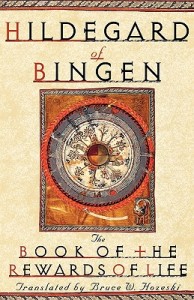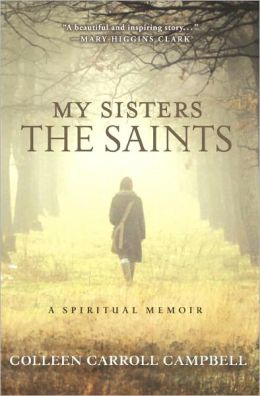
In this age of delayed and prolonged childbearing, it is expected that every expectant mother be completely “prepared” for her child. She should know the ins and outs of everything there is to know. She and her husband should have done all the things and travelled the world in all the ways they could ever want so as to ensure they’ve gotten all their other interests and desires out of the way before the baby comes. She should be in charge of her fertility. She should have completely planned such an occurrence and timed it perfectly. (Before long, she may be expected to have planned the baby’s gender or the color of her hair.) The nursery should be painted and furnished and the nanny already selected. Schools should be lined up, with the tuition allotted for them in a savings account. But most of all, in this age of planned parenthood, it is expected that, because she “planned” and “chose” it all, every expectant mother should be completely unafraid.
I don’t have everything completely “prepared” for my baby. And I know I won’t by the day he comes. After all, are we ever truly prepared for anything in life? We do our best. We use our prudential judgment and we definitely should plan as much as we can. We try our hardest and love our deepest. But there will always be delays and unexpected changes. There will always be something to mess up our plans. And if we waited on doing anything until absolutely everything was “ready” we might never experience anything at all.
One of the nice things about having a baby young is that people know I’m not completely prepared. They know there’s no way my husband and I have the nursery painted when, ten months after our wedding, we only now just painted the kitchen. They know we’re new to this. They know we’re going to struggle. They know we’re going to be exhausted. They know we’re going to be even, at least a little, afraid. And that’s okay. Because we’re young. And so we’re excused for such feelings. People want to help us and they do help us. Because they know that we need it.
But it seems like the older you get, the less mercy you’re given for any shortcomings, fears, or needs. After all, if you are the type of woman who did “take charge of her fertility,” (or even if you didn’t, but were unable to have children at a younger age,) then you are assumed to be an independent woman. That is part of this whole concept, is it not? Our modern mentality of being on the pill, of being sexually available, of planning everything, of having the freedom to end an unwanted pregnancy—so much of it is about independence. And it necessarily transfers over to parenting. We expect the older parent to be independent. Oftentimes, they inevitably are forced to be independent due to family members growing older themselves or moving away. You read now of parents throwing their own baby showers because no one offers to throw one for them. And how sad this is! How sad it is that we force so many parents into such complete and cold independence. Because such independence is actually a lie. It doesn’t work. It isn’t human. No parent is ever fully prepared. And every parent needs help.
And we understood this years ago. We understood this in the days when grandparents, extended family members, and neighbors and friends were an integral part of a child’s growing up. We didn’t expect expectant parents to know everything there was to expect. And in many ways, children were better off because of it. In general, I imagine, our children are better off the more we admit our shortcomings—children are better off the humbler we are as parents. Because when our children know that we know we aren’t perfect (but that we do our best,) and that the world isn’t perfect (but that people will be there to love and help them,) they learn to forgive. They learn to forgive us, and they learn to forgive the other people in their lives.
But a child will never learn forgiveness from a parent who is not allowed to be imperfect. A child will never learn forgiveness from a mother who is not allowed to admit she is at least a little afraid of labor pains or postpartum depression—of a mother who is not allowed to admit she’s genuinely concerned that she may gag each and every time she changes a diaper– but is ready and willing to try her best and love her hardest and ask for help when she needs it. A child will never learn forgiveness from parents who are supposed to be completely prepared– because no parent is completely prepared. We must teach our children forgiveness by first admitting that we will fail and that we cannot do it alone. And we absolutely must teach our children forgiveness. For if a child cannot forgive, how will they ever love a child of their own?
And so as a young expectant mother, blessed to have many people ready and happy to help me and forgive me my lack of experience and my shortcomings, I ask the world to do the same for the older “more prepared” mothers and fathers. The truth about planned parenthood is that it doesn’t work. The unplanned may be as significant as the baby himself or as insignificant as a diaper leak—but either way, planned parenthood is an impossibility. We can only do our best and ask for forgiveness and help and for friends and family to laugh with along the way. So let us do so. Let us learn to embrace unplanned parenthood (which is every case of parenthood) at any age and let it teach us better how to love.





 As Campbell journeys in search of her own feminine expression, she discovers and shares the story of six women from her Catholic faith tradition, most of them not biological mothers themselves, but each a saintly expression of the abiding love for humanity so often identified as the natural genius of women. Campbell travels with these women through the small and enormous challenges of daily life: work-family conflicts, deteriorating illness in a beloved parent, infertility and longings to control and command fulfillment of wishes. Figures like Teresa of Avila, a sixteenth century “party girl with the gift of gab and no shortage of male admirers” (14) and Maria Faustina, “a mousy-looking, barely literate nun,” (65) each become role models, spiritual mentors and true beacons of hope for Campbell as she progresses in her search.
As Campbell journeys in search of her own feminine expression, she discovers and shares the story of six women from her Catholic faith tradition, most of them not biological mothers themselves, but each a saintly expression of the abiding love for humanity so often identified as the natural genius of women. Campbell travels with these women through the small and enormous challenges of daily life: work-family conflicts, deteriorating illness in a beloved parent, infertility and longings to control and command fulfillment of wishes. Figures like Teresa of Avila, a sixteenth century “party girl with the gift of gab and no shortage of male admirers” (14) and Maria Faustina, “a mousy-looking, barely literate nun,” (65) each become role models, spiritual mentors and true beacons of hope for Campbell as she progresses in her search.